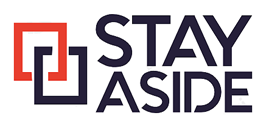Here’s how to get money out of your 401(k), including when it’s allowed and what to expect during the process.The options for taking a withdrawal of your 401(k) savings depend on whether or not you’re still working at your job and what options your employer offers.
We’ll cover several situations:
☑️ While you’re still working
☑️ After you leave your job
☑️ How to take income
☑️ And more
🌞 Subscribe to this channel (it’s free): https://www.youtube.com/channel/UCFFNzgGX4UyGQk12KL38I1Q?sub_confirmation=1
More on 401(k) withdrawals:
❓ How much tax will you pay? https://youtu.be/sefx2KgWfMs
❓ Can you avoid or reduce taxes? https://youtu.be/35oSvmve2tQ
After you leave your employer, it’s easy. Retiring or changing jobs provides an opportunity to take a distribution, typically whenever you feel like it. In some situations, like when you leave your job after age 55 (but before age 59.5), taking an immediate withdrawal might or might not be the right move.
While you’re still working, you might also have options for taking money out of the plan. For example, you might be able to take a 401(k) loan, a hardship withdrawal, in-service distribution, or even pull out some of your rollover money. Just be careful about early distribution penalties and income tax that might be due when you pull funds out. And even if you borrow from your 401k, you could end up with tax issues if you leave your job before paying off the loan.
Also, be aware that those are optional plan features, and your employer might not offer those solutions. Even if they do, you may be putting your retirement at risk if you access your savings early.
So, how exactly do you get the money out? Start by contacting your employer. Usually the Benefits department or HR is a good place to start. You can also contact the plan’s recordkeeper, or the company that holds your money (use the website you visit when managing your account, for example). You’ll complete a request, and your employer and plan administrator will take it from there. The process can take several days (or more), so prepare yourself for a bit of a wait. Sometimes it’s surprisingly fast.
If you’re retiring and you’re ready to start taking income, you have several options. Most people roll the money over to an IRA that they control. But it’s crucial to review the pros and cons, including costs, flexibility or restrictions, and other characteristics of your 401(k) and your IRA. With a thorough comparison done, you can choose the best option.
To take income, you can simply draw from your portfolio, or you can explore strategies that involve income guarantees or bucketing. Every method has advantages and disadvantages, so you need to decide what’s most important. And what you’re most comfortable with.
For more details on drawing retirement income, see this article: https://www.approachfp.com/3-approaches-to-retirement-cash-flow/
Related videos mentioned here:
What taxes do you pay in retirement? https://youtu.be/MwuMvyNBjwE
How the 4% rule works (or whatever number you choose): https://youtu.be/VjW9WT1gza8
Get free retirement planning resources: https://approachfp.com/2-downloads/
🔑 9 Keys to Retirement Planning
🐢 6 Safest Investments
Learn about working with me at https://approachfp.com/?utm_source=YT401k
Chapters:
00:00 Intro
00:15 What We’ll Cover
00:32 Are You Allowed To Take Money Out of Your 401(k)?
01:06 Important Info
01:25 How to Get Money After You Stop Working
03:09 How to Get Money Out While You’re Still Working: Loans, Hardships, & More
06:21 Logistical Tips: Taxes and More
08:34 Taking Income Out of Your 401(k)
Justin Pritchard, CFP® is a fee-only fiduciary advisor who can work with clients in Colorado and most other states.
IMPORTANT:
It’s impossible to cover every detail and topic in a video like this. The only thing that’s certain is that you need more information than this. Always consult with a CPA before making decisions or filing a tax return. This is general information and entertainment, and is not created with any knowledge of your circumstances. As a result, you need to speak with your own tax, legal, and financial professional who is familiar with your details. Please verify with your plan administrator when employer plans are involved. This information may have errors or omissions, may be outdated, or may not be applicable to your situation. Investments are not bank guaranteed and may lose money. Opinions expressed are as of the date of the recording and are subject to change. The Comments section contains opinions that are not the opinions of Approach Financial, Inc., and you should view all comments with skepticism. Approach Financial, Inc. is registered as an investment adviser in the state of Colorado and is licensed to do business in any state where registered or otherwise exempt from registration.
401k withdrawal,401k loan,401k hardship,early distribution,401k penalty,early withdrawal 401k,borrow from 401k
